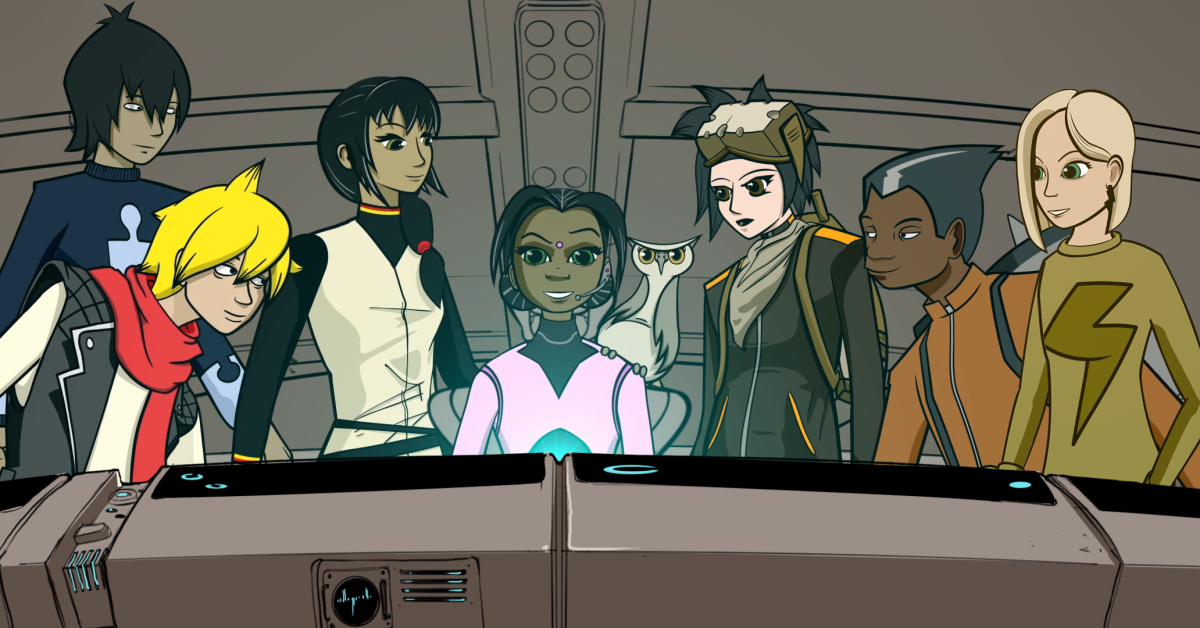How Cisco Is Helping Tweens Become Tech-Savvy Global Problem Solvers

This post was originally published on Harvard Business Review.
by Tae Yoo, SVP Corporate Affairs
When you think back to the first time an experience inspired you to take action, you’d likely point to your adolescent years. An engaging teacher, a passionate parent, an enthralling book, or a movie that you watched time and time again. In that moment you may not have realized, but as you look back, you clearly see that your perspective on the world—and a belief in your ability to shape it—were being formed.
Like any muscle, our capacity to think strategically and creatively to solve all types of problems must be formed, exercised, and used time and time again. Starting young, we can shape this muscle so that it becomes part of us, creating a new digital-savvy individual—a global problem solver who recognizes the power of technology, social awareness, and creativity to create an inclusive and sustainable future.
For more than two decades, Cisco has built a world-leading IT training program, Cisco Networking Academy, which has empowered millions around the world. Now we are taking this experience to younger learners with Global Problem Solvers: The Series (GPS: The Series), a new animated web series for kids exploring entrepreneurship, life skills, and how to use technology for social good.
Through this new initiative, we aim to demystify the potential of the Internet of Things (IoT) to accelerate impact and, most important, make learning fun and unforgettable for students.
GPS: The Series features a team of superhero teens tackling potential real-world social, economic, and environmental challenges across the globe. In the first season, they work to develop a solution to provide clean drinking water to communities in Malawi. In the second season, the team problem solves how kids can continue learning when schools are closed after a hurricane hits the U.S. Gulf Coast.
Structured around the key steps of social entrepreneurship—from articulating a problem to leveraging data and analytics to measuring impact—each season includes a series of short animated episodes accompanied by a teacher’s guide that provides discussion prompts, worksheets, and suggested follow-on activities. Students learn that coming up with an idea is just the first step in problem-solving—solutions need to be designed, funded, manufactured, deployed, maintained, and measured. By approaching social change as an entrepreneur and applying technology to accelerate the difference they can make, students can learn to find solutions that are scalable and sustainable.
Why have we chosen to focus on youth? Compelling research, along with a growing number of young, socially minded entrepreneurs making headlines, tells us that the middle school years might just be the perfect age to engage youth in social consciousness and entrepreneurship as well as to educate them on the expanding role of technology for social good.
For example, research shows that entrepreneurial skills such as problem solving and teamwork may be best taught during adolescent years. An experimental study conducted at schools in the Netherlands by the Institute for the Study of Labor (Bonn, Germany) found that an entrepreneurship program implemented in the middle grades (with students as young as 11 and 12 years old) helped students engage and succeed in school as well as aided them in developing other skills, including self-efficacy, achievement orientation, and collaboration, all of which are critical for successful entrepreneurs.
Furthermore, a study by the Australian Computer Society and the University of Canberra in 2013 found that students’ interest in studying information and communication technology (ICT) seems to peak between the ages of 12 and 15, and waiting to introduce students to ICT subjects until they are older could be counterproductive and a missed opportunity.
Consider the story of Anushka Naiknaware, an American teen who at 13 was the youngest winner of the Google Science Fair, with her invention of a bandage with digital sensors that wirelessly alerts caregivers when it needs to be changed. Or Julián Ríos Cantú of Mexico, who after nearly losing his mother to breast cancer as a teen, channeled his passions to create Higia Technologies at 17, a biosensors company supporting early detection of breast cancer.
Students piloting GPS: The Series are well poised to follow in their footsteps. Inspired by the series, students came up with IoT-based solutions addressing issues in their communities ranging from water purification to waste reduction services to devices for veterans suffering from PTSD.
It is easy to overlook that these powerful adolescent years are a critical period of development. However, intellectually, cognitively, psychologically, socially, and emotionally, youth at this age are changing at a rapid pace. What they learn during this period can have a significant impact on their future.
Research by Cisco in partnership with Oxford Economics, further shows that entrepreneurial and human skills will be increasingly in demand as technology changes the way we live and work. So how can the education system breed a new generation of socially conscious and entrepreneurial-minded professionals who also have the skills needed for the future? How can we build excitement for learning and inspire today’s youth to channel their passions and skills into a solution—or a career—that leverages technology to accelerate impact?
Exposing and engaging students early is one of the best chances we have, and it benefits everybody. We encourage you to explore Cisco’s Global Problem Solvers: The Series here. Share materials with your children, schools, and educators in your community, and provide us with feedback so we can improve the series.
Help us build a pathway for in-demand entrepreneurial and life skills, growing the impact that the participants can have now and hopefully for years to come.
Read More:
- Learn more about Global Problem Solvers: The Series here.
- Download the teacher’s guide in English, Spanish, French, or Hindi now to see for yourself how Global Problem Solvers: The Series can complement your existing curriculum and engage your students in an exciting new way.
- Cisco is leveraging technology to accelerate global problem solving and solve our world’s greatest challenges. Find out more by visiting our CSR website.

